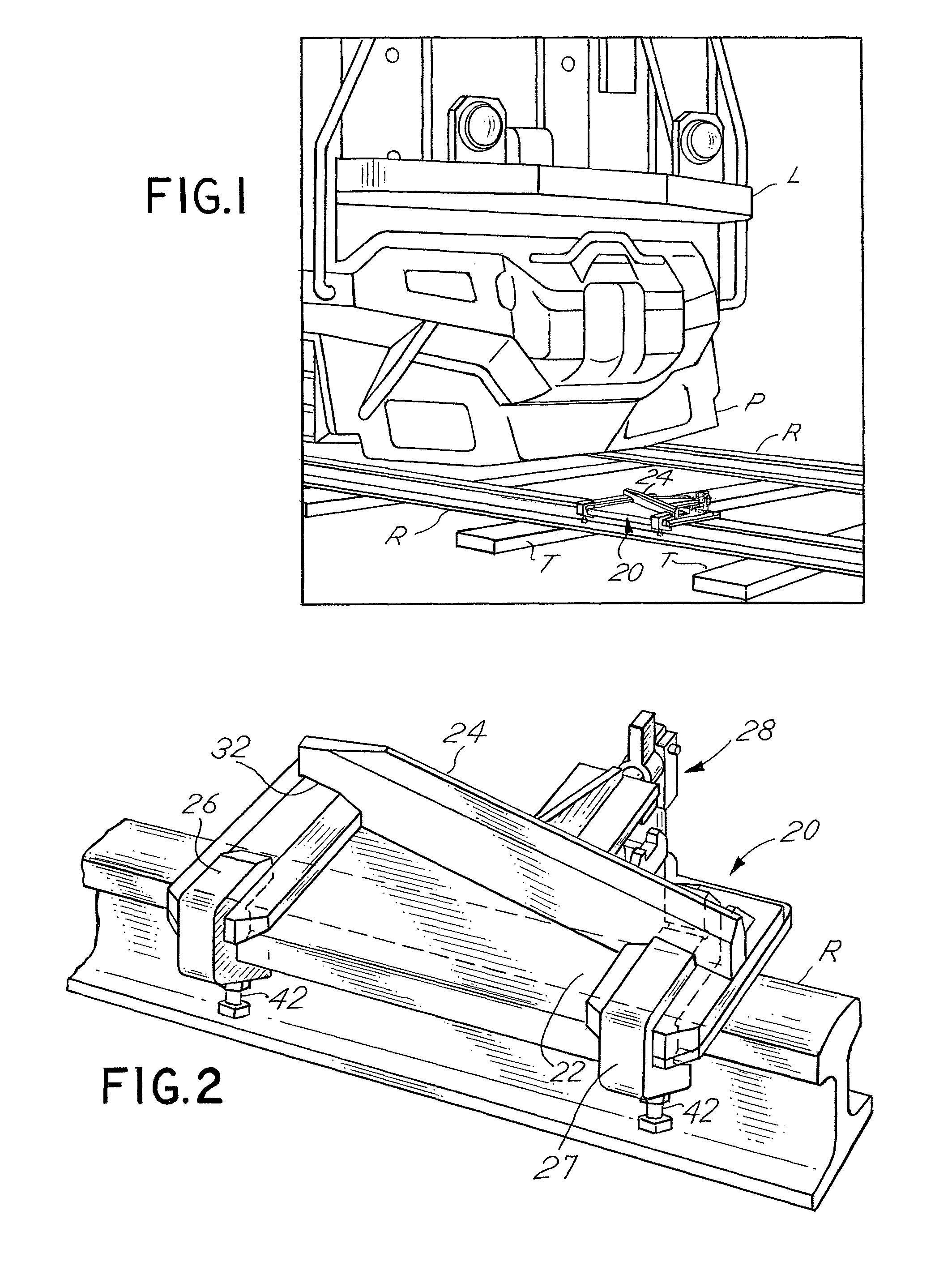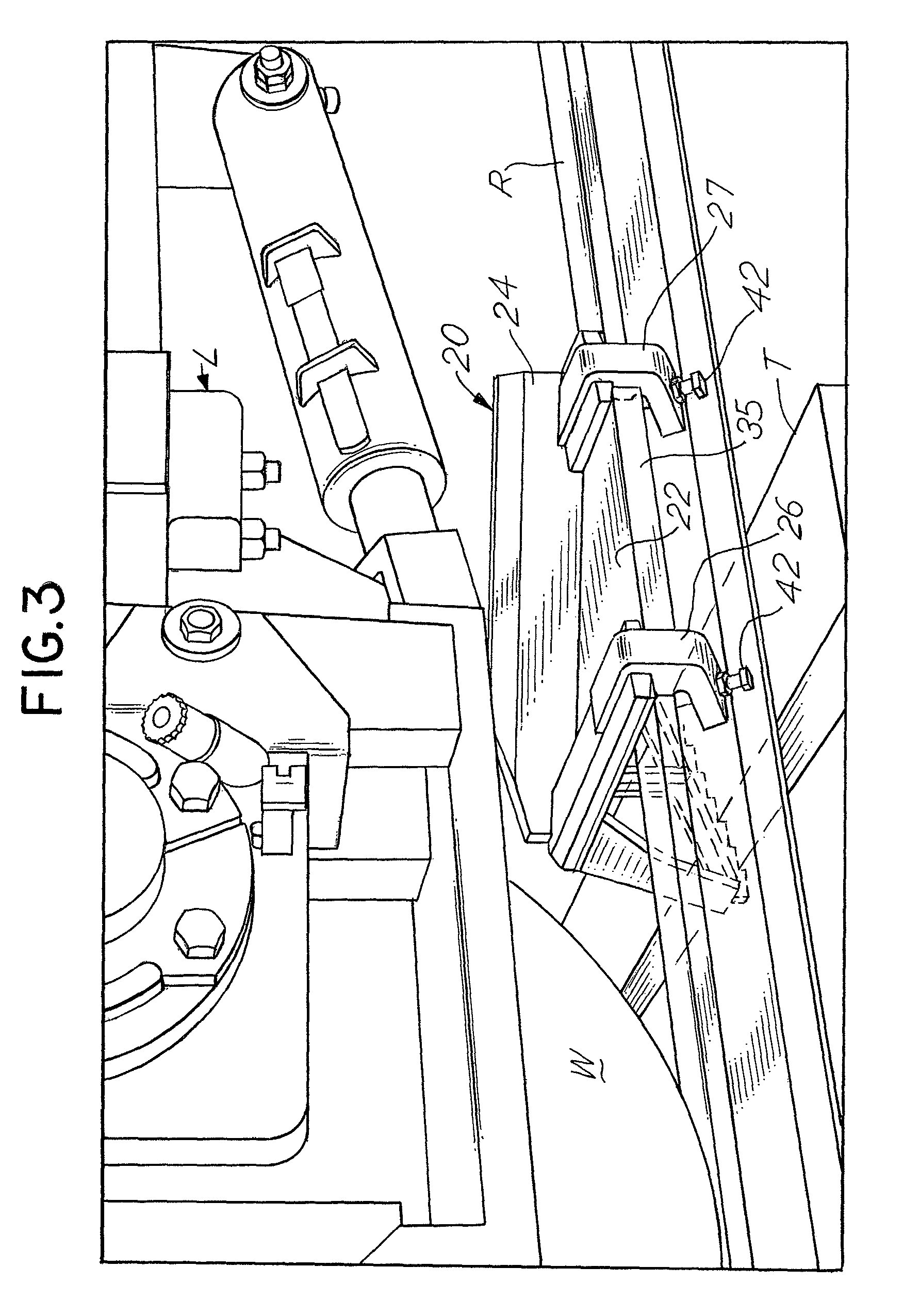Low profile derail
a low-profile, derailment technology, applied in the direction of rail engagement elements, interlocking points of signals, transportation and packaging, etc., to achieve the effect of improving the design of the derailment, and reducing the weight of the derailmen
- Summary
- Abstract
- Description
- Claims
- Application Information
AI Technical Summary
Benefits of technology
Problems solved by technology
Method used
Image
Examples
embodiment 20
[0029]Referring to FIGS. 4-6, the derail embodiment 20 is shown in somewhat greater detail. Some common details are found in U.S. Pat. No. 6,105,906, which is incorporated herein by reference. As previously indicated, the upright deflecting bar 24 is effectively angled outwardly to engage the moving lead wheel W of the locomotive L since the pilot P of the locomotive L has cleared the highest point of the derail assembly 20, thereby derailing the moving locomotive L to the field side of the rail R.
[0030]Referring to FIGS. 4-6. the entrance derail hook 26 is rigidly secured to the derail shoe plate 22, as by welding, along its lower surface while the inner end or gage side end 32 of the entrance derail hook 26 is welded to the outer or field side face of the entrance end of the deflecting bar 24.
[0031]The derail shoe 22 is a rigid heavy duty plate that is welded to the lower edge of the upright deflecting bar 24 along the entire length of the bar 24 along the field side face of the d...
embodiment 48
[0036]The improved derail embodiment 48 is shown in FIGS. 7-11 which includes a derail shoe plate 50 which, like the derail plate 22 of the derail 20, substantially covers the entire upper surface area of the rail R upon which the assembly 50 is secured. The plate 50 includes a unitary downturned flange 51. The heavy duty derail shoe plate 50 and flange 51 provide significant stability and rigidity to the assembly 48 to better resist torquing resulting from the heavy weight of the front end of an undesirably moving locomotive L during a controlled derailment.
[0037]A deflecting bar 52 is rigidly secured as by welding to the upper surface of the derail shoe 50 and is angled outwardly, that is, from the gage side, toward the field side of the rail R. The mounting of the derail assembly 48 upon the rail R is substantially the same as the mounting of the derail assembly 20 upon the rail R, as discussed in FIGS. 1-6.
[0038]Upright support plates 60 are secured by welding to the upper surfa...
PUM
 Login to View More
Login to View More Abstract
Description
Claims
Application Information
 Login to View More
Login to View More - R&D
- Intellectual Property
- Life Sciences
- Materials
- Tech Scout
- Unparalleled Data Quality
- Higher Quality Content
- 60% Fewer Hallucinations
Browse by: Latest US Patents, China's latest patents, Technical Efficacy Thesaurus, Application Domain, Technology Topic, Popular Technical Reports.
© 2025 PatSnap. All rights reserved.Legal|Privacy policy|Modern Slavery Act Transparency Statement|Sitemap|About US| Contact US: help@patsnap.com



